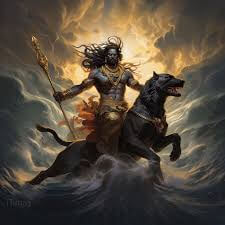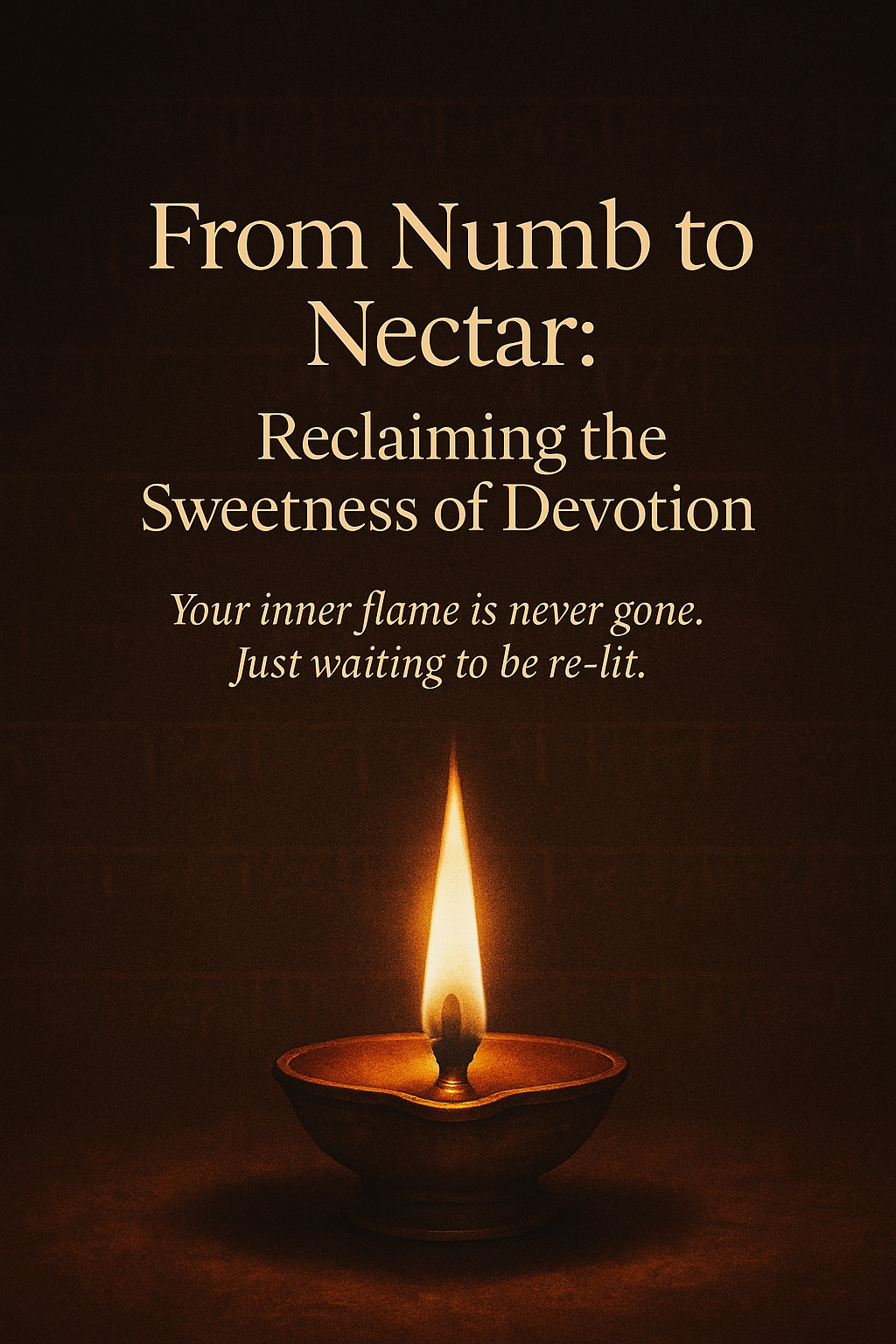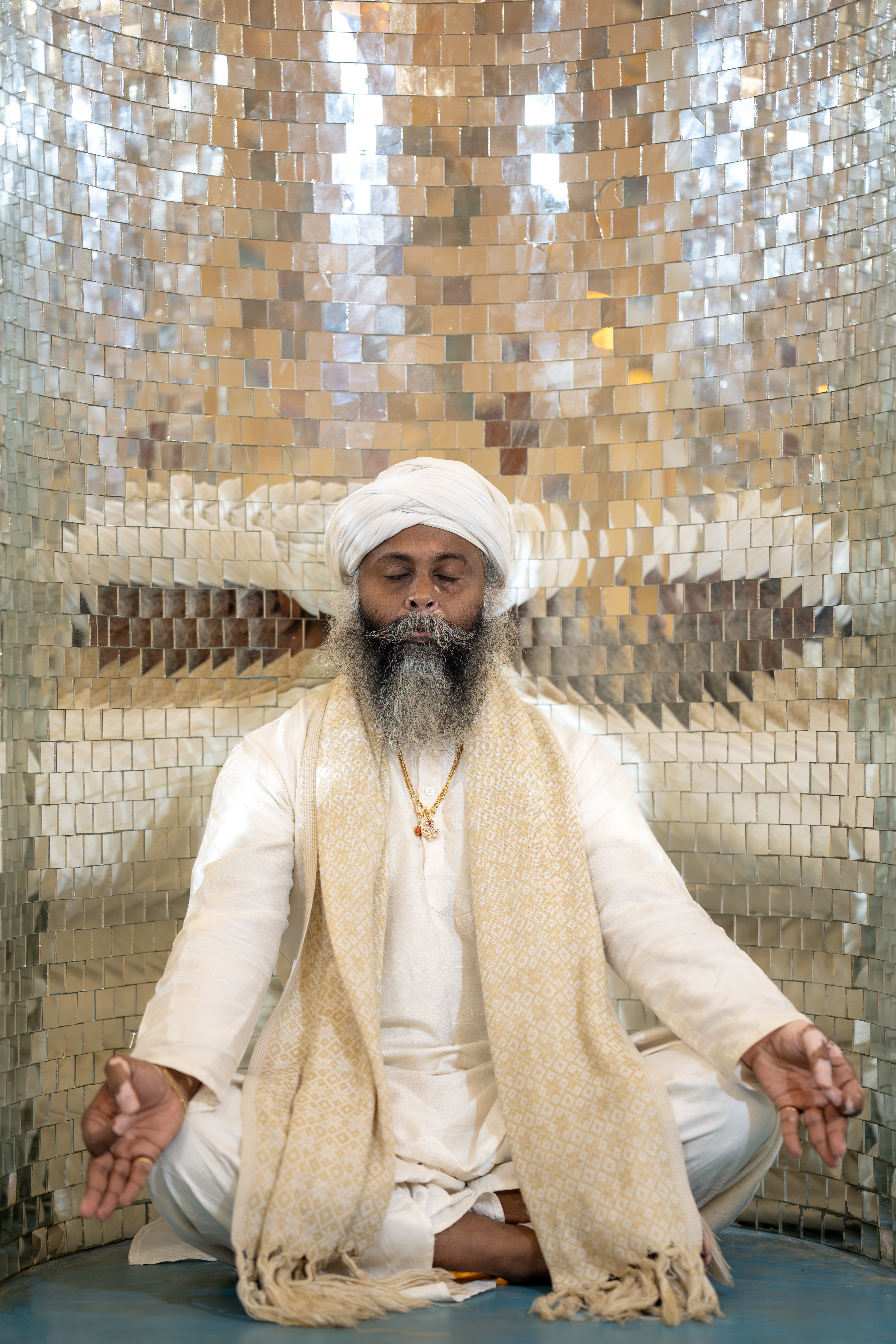Kala Bhairava Jayanti, also known as Kala Bhairava Ashtami, is a sacred day dedicated to Lord Kala Bhairava, an intense and powerful manifestation of Lord Shiva. Observed on the Ashtami Tithi (eighth day) of the Krishna Paksha (waning phase of the moon) during the Hindu month of Margashirsha (November–December), this auspicious occasion holds profound spiritual significance for devotees seeking protection, liberation, and inner transformation.
Who is Kala Bhairava?
Kala Bhairava, an awe-inspiring deity in Hinduism, symbolizes the fierce form of Shiva, embodying the energies of time, destruction, and cosmic order. As the guardian of time, he ensures the balance of the universe while protecting devotees from negativity, fear, and adversities. His name "Kala" refers to time, and "Bhairava" translates to the fearsome protector.
Kala Bhairava is often depicted as a formidable figure adorned with serpents, skulls, and a trident, riding a black dog. Despite his fierce appearance, he is revered for his boundless compassion toward devotees who surrender to him.

Mythological Significance
According to Hindu mythology, the origin of Kala Bhairava is associated with the story of Brahma’s arrogance. Lord Shiva took the form of Kala Bhairava to humble Lord Brahma, who had become conceited about his role as the creator. In this fierce form, Shiva cut off one of Brahma’s five heads, symbolizing the destruction of ego and pride. This act established Kala Bhairava as the guardian of cosmic balance and the punisher of wrongdoers.
Significance of Kala Bhairava Jayanti
Kala Bhairava Jayanti is an opportunity for devotees to:
- Seek Protection: Worshiping Kala Bhairava is believed to shield devotees from accidents, diseases, and negative energies.
- Overcome Fear: Bhairava represents fearlessness, helping devotees transcend their fears and insecurities.
- Attain Liberation: Kala Bhairava's energy facilitates spiritual awakening and liberation (moksha) by removing the illusions of time and ego.
- Invoke Time Management: As the ruler of time, he blesses devotees with discipline, focus, and efficiency in their daily lives.
Rituals and Observances
On Kala Bhairava Jayanti, devotees perform various rituals to honor the deity and seek his blessings. Here are some key practices:
1. Fasting
- Many devotees observe a strict fast from sunrise to sunset, breaking it only after performing puja.
- This fast is a symbolic act of self-purification and dedication to Lord Bhairava.
2. Puja and Offerings
- Altar Setup: Devotees set up an altar with an idol or picture of Kala Bhairava, adorned with flowers, incense, and lamps.
- Offerings: Traditional offerings include black sesame seeds, mustard oil, and special sweets like kheer. Alcohol and non-vegetarian food are also offered in some traditions, as they are believed to appease Bhairava.
- Mantra Chanting: Devotees chant the Kala Bhairava Ashtakam or recite his mantras, such as:
"Om Hreem Vatukaya Aapaduddharanaya Kuru Kuru Bhairavaya Namah" - Special abhishekam (ritual bathing) with milk, honey, and water is performed on his idol or Shivalinga.
3. Visiting Temples
- Devotees visit Kala Bhairava temples, such as the famous Kala Bhairava Temple in Ujjain, to offer prayers and seek blessings.
- Feeding black dogs, considered sacred to Bhairava, is an important ritual, as they symbolize loyalty and protection.
4. Lighting Lamps
- Lighting diyas (oil lamps) with sesame oil is believed to dispel darkness and negativity, inviting divine energy into one’s home.
Astrological Importance
Kala Bhairava Jayanti has astrological significance as well. It is believed that worshiping Kala Bhairava on this day mitigates the malefic effects of Rahu and Shani (Saturn) in one’s horoscope. Devotees experiencing delays, obstacles, or misfortunes due to planetary influences can find relief by observing the rituals of this day.
Spiritual Lessons from Kala Bhairava Jayanti
- The Illusion of Time: Kala Bhairava teaches that time is both a creator and destroyer. By aligning with its flow, we can achieve harmony in life.
- Ego Dissolution: Just as Kala Bhairava humbled Brahma, he reminds us to let go of pride and embrace humility.
- Fearlessness: By surrendering to the divine, we can overcome fear and live with confidence and grace.
- Self-Discipline: The observance of this day instills discipline and focus, enhancing one’s spiritual and material pursuits.
Celebrations Across India
While Kala Bhairava Jayanti is widely celebrated in North India, particularly in Madhya Pradesh and Uttar Pradesh, it is equally significant in South India, where Bhairava is worshiped in Shaivite traditions. The day is marked by vibrant temple festivals, special pujas, and cultural programs honoring Lord Bhairava.
Kala Bhairava in Daily Life
Even beyond Jayanti, regular worship of Kala Bhairava can bring immense benefits. Devotees can:
- Chant his mantra every Tuesday or Saturday.
- Feed stray dogs as a form of seva (selfless service).
- Meditate on his fierce yet protective energy to cultivate inner strength.
Conclusion
Kala Bhairava Jayanti is not merely a day of rituals but a reminder of the divine forces that govern our existence. By honoring Kala Bhairava, we align ourselves with the cosmic rhythm, protect ourselves from negativity, and unlock the potential for spiritual growth and liberation.
On this auspicious day, let us invoke the blessings of Lord Kala Bhairava to guide us through the complexities of life, helping us conquer fear, transcend time, and embrace the eternal truth of the divine.
Om Kala Bhairavaya Namah!
The full moon on November 15, 2024, known as Karthik Purnima, marks a spiritually significant day in the Vedic month of Karthik. This full moon is also celebrated as Tripuri Purnima, Dev Diwali, and Tulsi Vrinda Jayanti.
Let’s dive into the mythology, rituals, and powerful practices associated with this auspicious day.
The Legend of Tripurantaka: Shiva’s Victory Over Tripurasura
In Hindu mythology, Karthik Purnima is celebrated as Tripuri Purnima to commemorate Lord Shiva’s defeat of the demon Tripurasura. Tripurasura was a formidable demon who, with his power, created three celestial cities known as Tripura in space and subjugated the gods and the entire world. His tyranny led the gods to seek help from Lord Shiva, who, in his form as Tripurantaka ("Killer of Tripurasura"), annihilated the demon with a single arrow, destroying the three cities in one swift stroke. Overjoyed by the victory, the gods declared Karthik Purnima as a festival of lights, thus giving it the name Dev Diwali, or "Diwali of the Gods."
The Significance of Matsya and Vrinda
Karthik Purnima is also celebrated as the birthday of Matsya, the fish avatar of Lord Vishnu. This avatar represents the first in a series of incarnations in which Vishnu appears in a form aligned with the world’s natural progression and serves as a protector during times of chaos.
Another significant celebration on this day is the birthday of Vrinda, the divine embodiment of the holy Tulsi plant. Vrinda’s devotion is honored in Hindu households, as the Tulsi plant is revered for its spiritual and healing properties.
Karthik Purnima and Kritikka Nakshatra: Rituals for an Auspicious Day
Karthik Purnima falls under the Kritikka Nakshatra, which is ruled by the Sun. This day is considered one of the most auspicious days of the year for honoring the Sun, cleansing oneself, and practicing spiritual rituals to channel divine energy and guidance.
Here are some key rituals to follow for Karthik Purnima:
1. Holy Bath with Sacred Mantra
Start the day with a holy bath by reciting this powerful mantra:
गङ्गे च यमुने चैव गोदावरि सरस्वति ।
नर्मदे सिन्धु कावेरि जलेऽस्मिन् संनिधिं कुरु ॥Gangge Ca Yamune Cai[a-E]va Godaavari Sarasvati |
Narmade Sindhu Kaaveri Jale-[A]smin Sannidhim Kuru ||
The mantra invokes the presence of India’s sacred rivers—Ganga, Yamuna, Godavari, Saraswati, Narmada, Sindhu, and Kaveri. By chanting it, we imbue our bath with the purifying energies of these rivers, connecting ourselves to the sacred waters and receiving their blessings.
2. Surya Arghya and Surya Namaskar
With Kritikka Nakshatra being ruled by the Sun, this day is ideal for expressing gratitude to Surya, the Sun God. Offer Arghya (water) to the Sun, pouring water from a copper vessel as you face east, allowing the sunlight to filter through the water. As you do so, feel the energy of the Sun as it illuminates your path, providing clarity and strength.
Following this, perform Surya Namaskar (Sun Salutations), the yogic sequence honoring the Sun’s life-giving energy. This practice not only boosts physical strength but also strengthens mental clarity and connection to divine energy.
3. Meditate on Kanda Sashti Kavacham
The day also honors Lord Kartikeya, the warrior son of Shiva and Parvati, who represents courage, focus, and strength. Reciting the Kanda Sashti Kavacham, a protective hymn for Lord Kartikeya, invites his energy of resilience and bravery into our lives. As you meditate on this hymn, visualize Kartikeya's strength and feel his divine protection surrounding you.
4. Listen to Aditya Hrudaya Stotram
The Aditya Hrudaya Stotram, a Vedic hymn dedicated to the Sun, is a powerful invocation for dispelling negativity and invoking inner courage. Listening to or chanting this Stotram channels divine energy into our lives, strengthening our focus, resilience, and joy. The Stotram’s vibrations also help align our intentions and actions with the Sun’s illuminating power.
A Day of Illumination and Celebration
Karthik Purnima is often marked by the lighting of lamps, mirroring the gods’ celebration of Shiva’s victory over darkness and chaos. On this night of Dev Diwali, homes and temples are illuminated, symbolizing the triumph of light over darkness, wisdom over ignorance, and dharma over adharma.
Conclusion
Karthik Purnima is a day filled with deep spiritual symbolism, transformative rituals, and an opportunity for devotion and celebration. It reminds us that divine intervention and devotion can bring about victory over challenges, inspire new beginnings, and light the way toward a fulfilled, harmonious life.
As you celebrate this sacred full moon, may the blessings of Lord Shiva, Lord Vishnu, the Sun God, and Tulsi Vrinda fill your heart with strength, joy, and peace.
Marriage is often seen as a monumental life event that can impact not only daily routines but also the very personalities of those involved. Recent research involving 169 newlywed couples over 18 months reveals that marriage can lead to measurable changes in personality traits such as openness, conscientiousness, extraversion, agreeableness, and neuroticism. These changes influence how individuals think, behave, and relate to each other, shedding light on the evolving dynamics of married life.
Husbands often show increased conscientiousness, becoming more dependable and focused on long-term commitments, while wives experience enhanced emotional stability, feeling more secure and supported. However, both partners tend to show decreased openness to new experiences as they embrace shared routines, which can reduce their appetite for constant novelty but foster deeper, more meaningful experiences within the relationship. Additionally, newly married couples may become less extroverted, limiting their social circles to prioritize their partnership, although this can strengthen the bond between them.
Interestingly, while agreeableness initially increases, it tends to diminish over time as couples settle into marriage and let quirks re-emerge, leading to occasional conflicts. Despite these shifts, the study suggests that traits changes alone don’t predict marital success; instead, qualities like self-control and forgiveness are crucial. Embracing change and fostering open communication allow couples to navigate this transformation, making marriage a journey of personal and mutual growth that strengthens the partnership.
Read more...Halloween is more than just a night of costumes and ghost stories; it marks a time when the boundary between our world and the spirit world is said to be at its thinnest. Known originally as Samhain in Celtic tradition, this mystical period offers an opportunity to connect with ancestors and loved ones who have passed on, highlighting the belief that death is not an end, but a continuation of love and guidance. This sacred observance invites us to honor the mystical cycle of life and death, encouraging deeper spiritual reflection and heightened intuition.
The notion that love defies the constraints of the physical world is a profound theme of Halloween. It’s a time to pay tribute to ancestors, believing that their wisdom and spirit continue to influence our lives even from beyond the veil. Through simple acts like storytelling, lighting candles, or setting up altars, we maintain bonds with those who have crossed over, reaffirming that their essence and love remain integral to our existence.
Halloween also compels us to confront and embrace the concept of death, viewing it not as something to fear, but as a natural segment of life’s cycle. The Halloween symbols of ghosts and ghouls help us to demystify and desensitize death, allowing us to live more fully by recognizing that beginnings and endings are part of the same continuum. As we celebrate both the seen and unseen, Halloween becomes a powerful reminder of the enduring connections that transcend time and space.
Read more...Diwali, the vibrant "Festival of Lights," is an eagerly awaited five-day Hindu celebration that symbolizes the triumph of light over darkness and good over evil. Commencing with Dhanteras and concluding with Bhai Dooj, each day is imbued with unique customs and legends that infuse homes with joy, warmth, and devotion. As families clean and decorate their homes, buy gold as a token of prosperity, and light the first diya, the spirit of Diwali permeates every corner.
The festival's main day, Diwali, is dedicated to Goddess Lakshmi, where worshippers seek her blessings for wealth and prosperity through rituals such as Lakshmi Puja. The dazzling display of diyas and fireworks across communities highlights the victory of joy over sorrow, coupled with the exchange of sweets and gifts that fortify familial bonds. Meanwhile, Govardhan Puja and Bhai Dooj highlight gratitude towards nature and the celebration of sibling relationships, respectively, embodying a deep sense of gratitude and love.
In its essence, Diwali is much more than a series of rituals; it's an uplifting reminder that light and knowledge will always conquer darkness and ignorance. This festival encourages everyone to spread love and compassion, fostering a world filled with joy and understanding. As the glow of diyas brightens homes, Diwali inspires us to cultivate a spirit of kindness and generosity, nurturing a more luminous and harmonious existence.
Read more...
